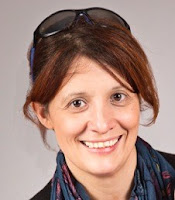 |
| Image via Goodreads |
On a simple sentence-by-sentence level, Anne Corlett’s debut is one of the best-written — and most quotable — science fiction novels in several years.
For readers with an affinity for England and Englishness, Corlett’s language will be a treat. Other might find the prose affected and the references to nineteenth and early twentieth century British values off-putting. What cannot be denied is the skill with which she writes. The author’s degrees in law and in creative writing are evidenced by the precision of her language.
The future of plagues
The story takes place across a multitude of worlds that until recently were part of an interstellar federation. This federation was prosperous but struggling to respond to the effects of overpopulation with extremely conservative and disruptive immigration policies, enabled by a strict class-based social stratification. As the narrative starts, a plague has swept across every inhabited planet, leaving few survivors. Of what were once billions, perhaps five thousand people remain.
The main protagonist Jamie, an upper class, recently divorced woman who appears to be the sole
 |
| It does seem excessively British to be shipping fine china and a grand piano from one side of the galaxy to the other. (Image via CakeStandHeaven.com) |
The story neatly marries the intellectual traditions of the British disaster novel (I.E. The Death Of Grass and The Wind From Nowhere), and the modern space opera (I.E. Long Way To A Small Angry Planet and Firefly).
Disaster novels often repudiate the comforts of modern living and laud the hardy souls who have the mettle to survive. Corlett, however, manages to magnify what has been lost by setting this novel in a materialistic utopia, with characters that feel dissipating emotional attachments to non-essential goods and instead learn to prioritize social cohesion with survivors from diverse social classes and life experiences. There is no celebration of the destruction, nor any great hero riding in to provide order and forge a new beginning.
Written with compassion
Those in our book club who have assisted people with intellectual disabilities noted that Corlett
 |
| The author, Anne Corlett has degrees in both law and creative writing. (Image via AnneCorlett.com) |
This character with autism is a key part of the story, both showing Jamie slowly coming out of her shell as she begins to help Finn, and highlighting several of the book’s subtle metaphors, such as the ocean-polished shards of glass that no longer fit together as they once did.
Some readers felt the book drags in the last third, once the protagonist and the rag-tag crew of companions she’s accumulated arrive on Earth. It is unfortunate that the plot begins to strain credulity as the reader learns that one after another of Jamie’s acquaintances and family have survived the plague.
Especially dull are the sequences involving a group of historical role players intent on recreating Georgian Era fashion and mores. Annoyance with the characters tends to overshadow the obvious
 |
| The Northumberland coastline calls to Jamie as a place of refuge. (Image via Northumberland.com) |
Abandoning the genre
Oddly, if you were to read only the the last 100 pages, you might not notice that they are part of a science fiction novel. Corbett seem to abandon the genre entirely, as the character grapples with family history and the location in which she grew up.
Despite some excessive plot conveniences, The Space Between The Stars should receive serious awards consideration for the richness of its language, the deftness of character development, and the complexity of its metaphors.
Despite some excessive plot conveniences, The Space Between The Stars should receive serious awards consideration for the richness of its language, the deftness of character development, and the complexity of its metaphors.

No comments:
Post a Comment